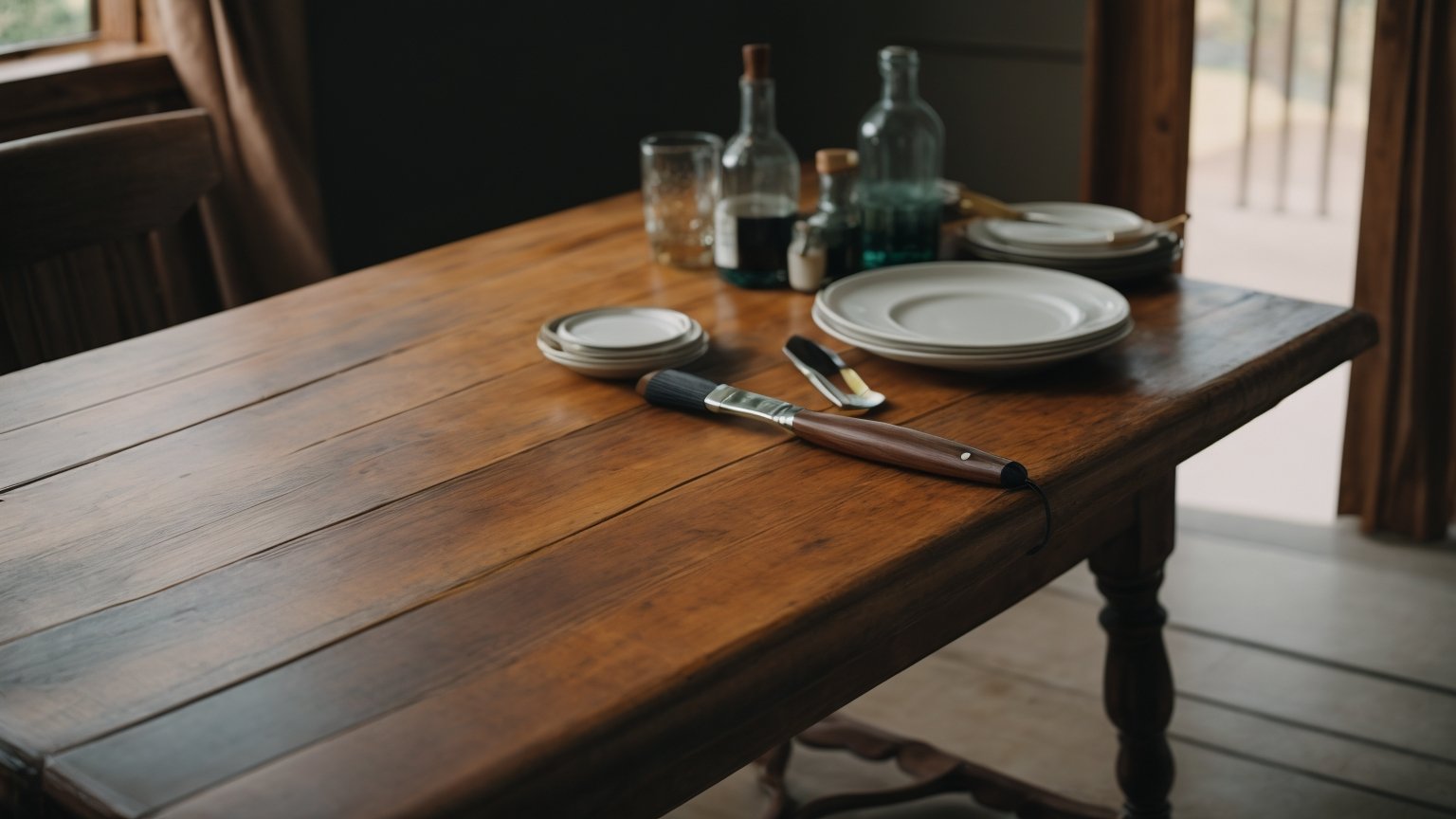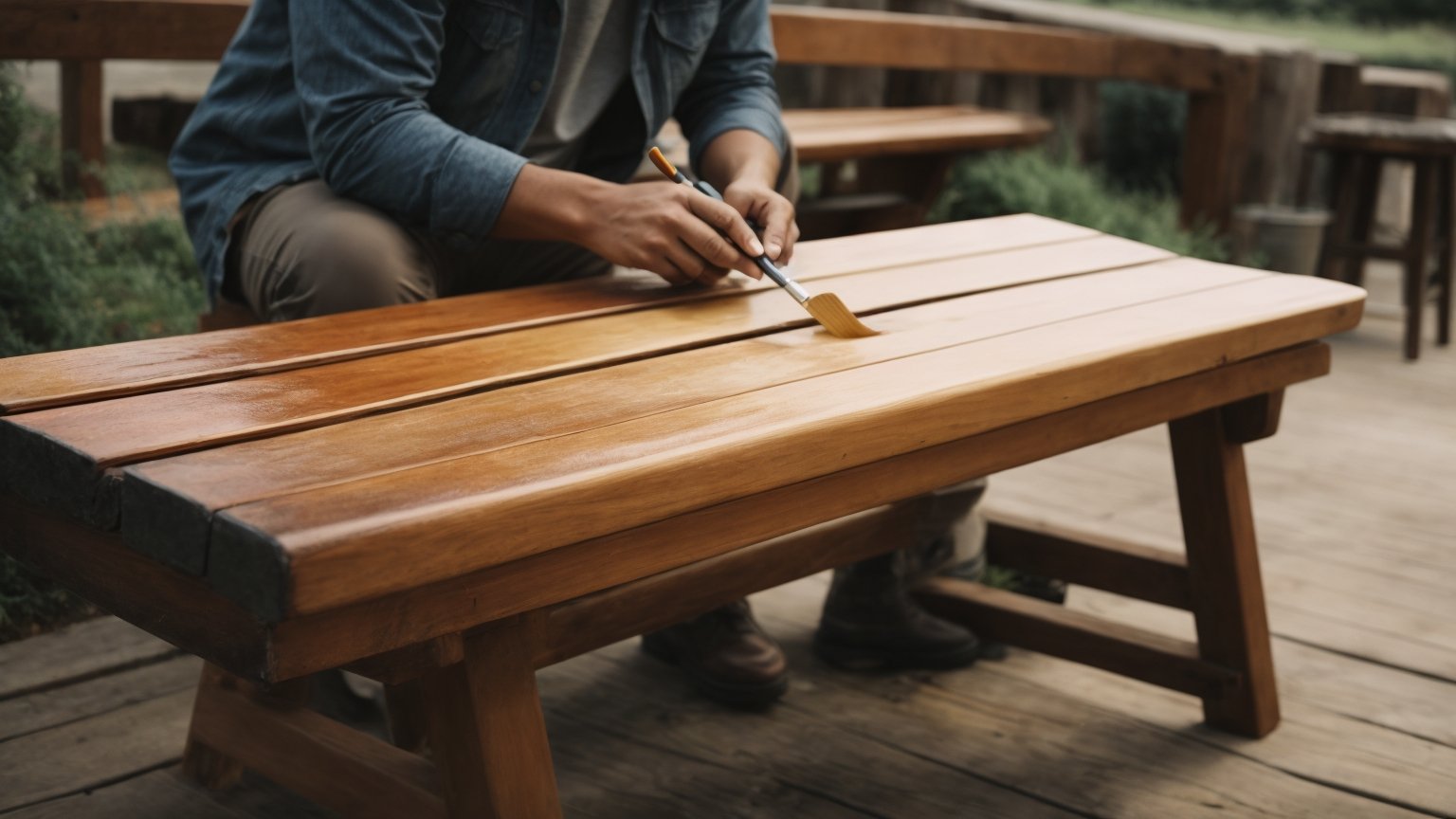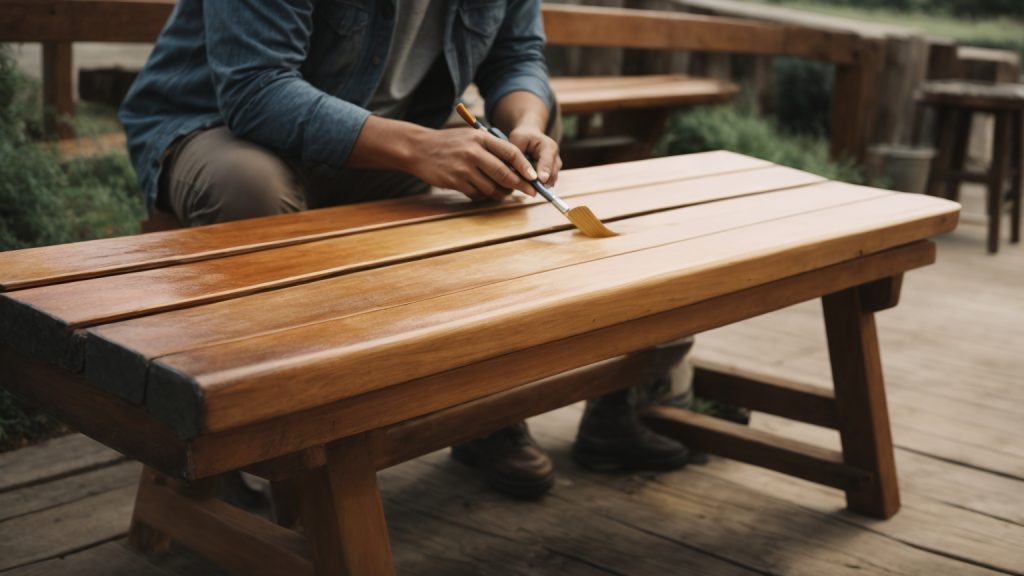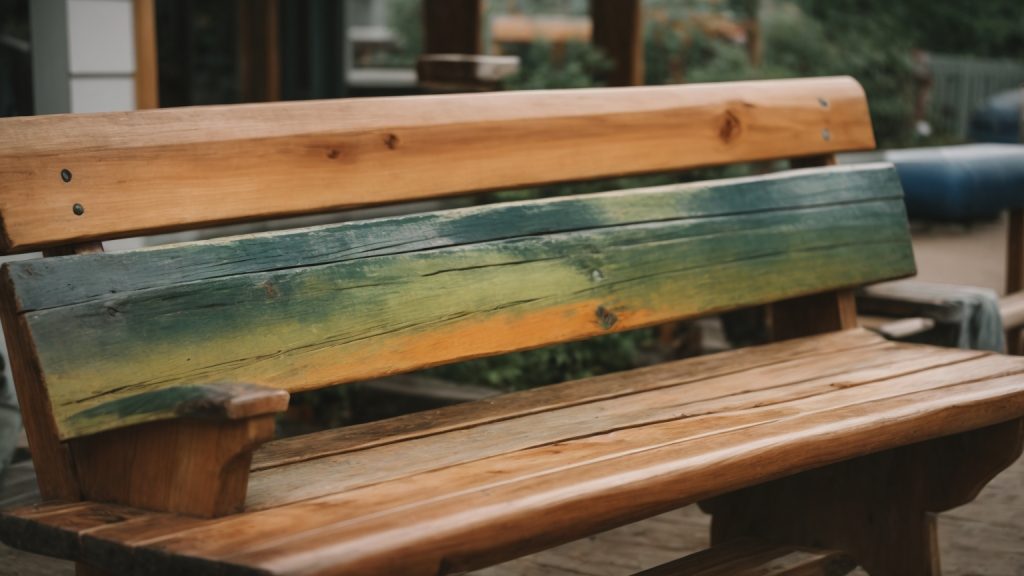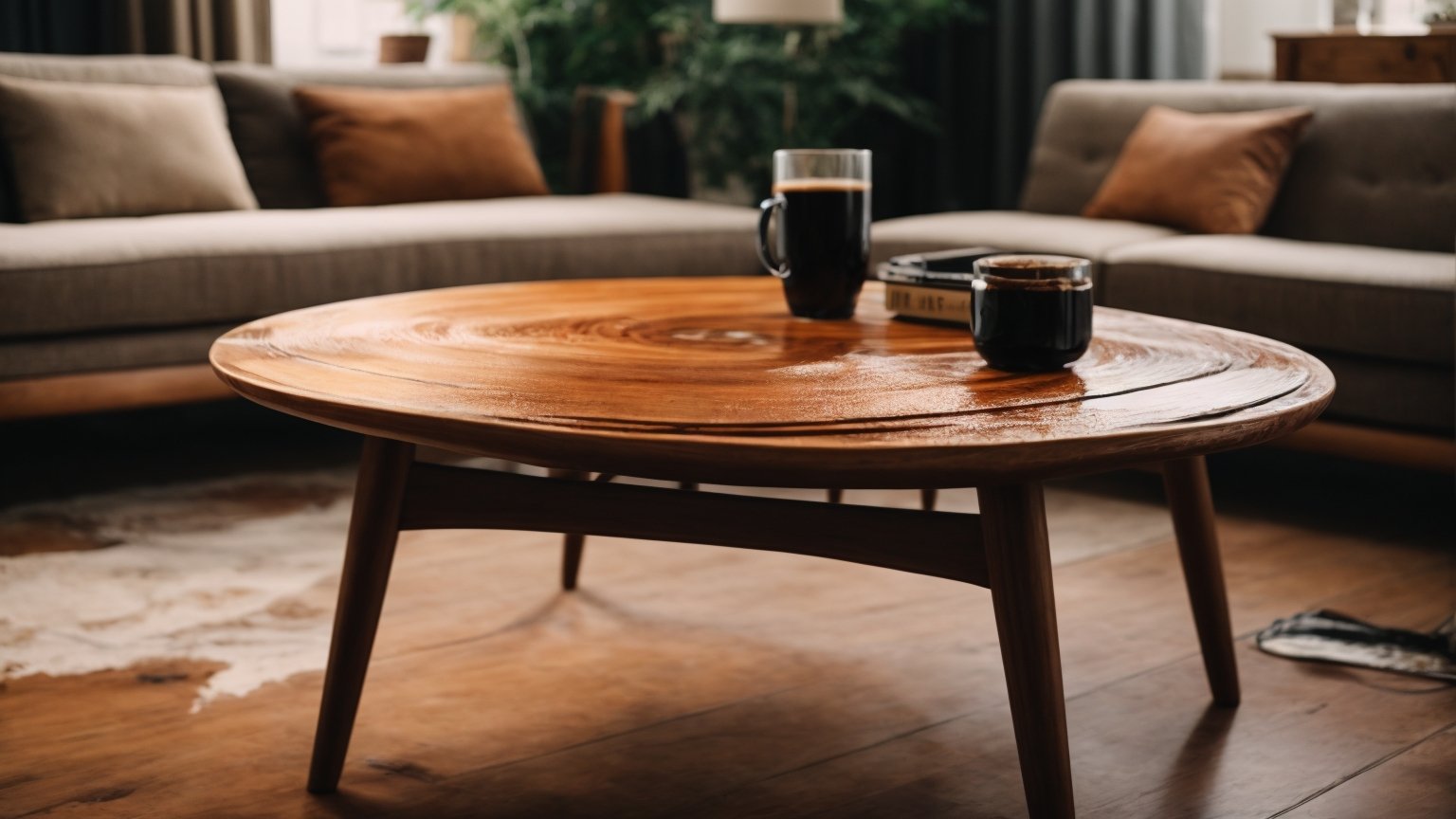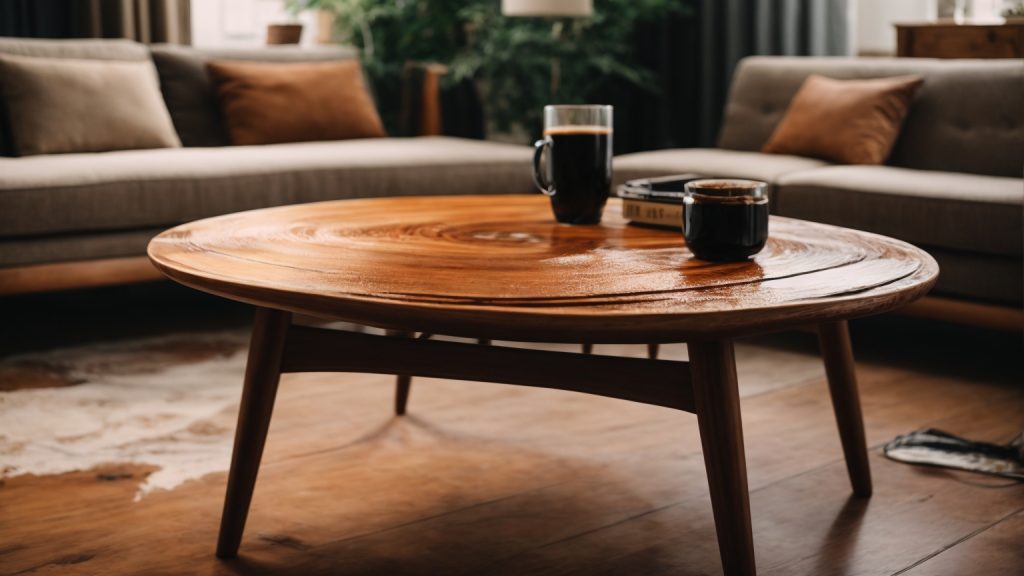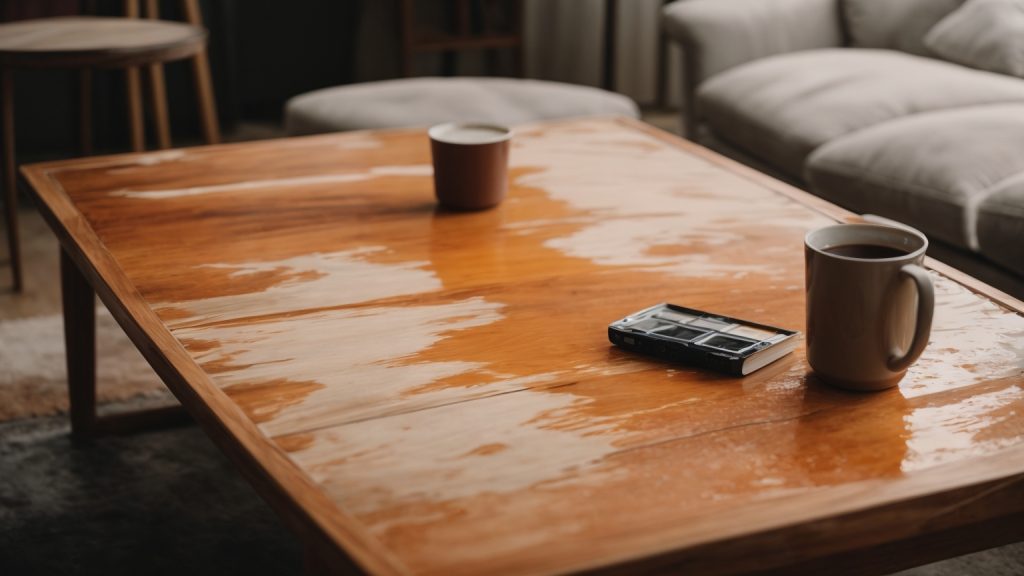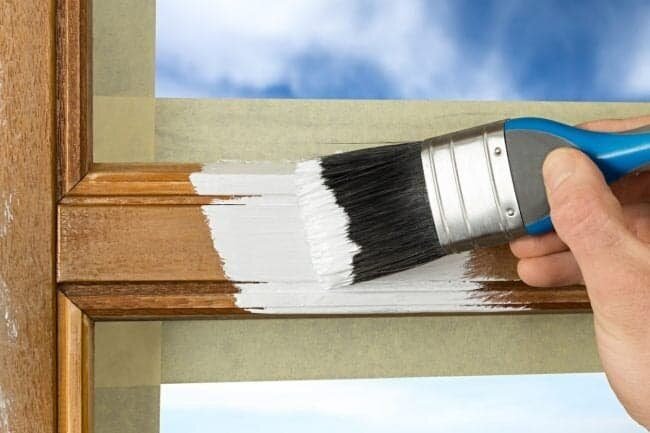If you’re looking to give your wooden table a fresh new look, painting it can be a great option. Not only is it an affordable way to update your furniture, but it can also be a fun DIY project. However, if you’ve never painted a table before, it can be a little intimidating. Don’t worry, we’re here to help! In this article, we’ll walk you through the steps on how to paint a wooden table.
Before you get started, it’s important to pick the right products. Long-lasting results go hand-in-hand with the right prep, products, and patience. In this article, we’ll cover different methods for painting a wooden table, including using a roller and paintbrush, spray painting, and spray cans. We’ll also discuss what type of paint you should use for furniture painting and how to prepare the surface of your wooden table for painting. With these tips, you’ll be able to give your wooden table a perfect finish.
Understanding the Basics of Painting
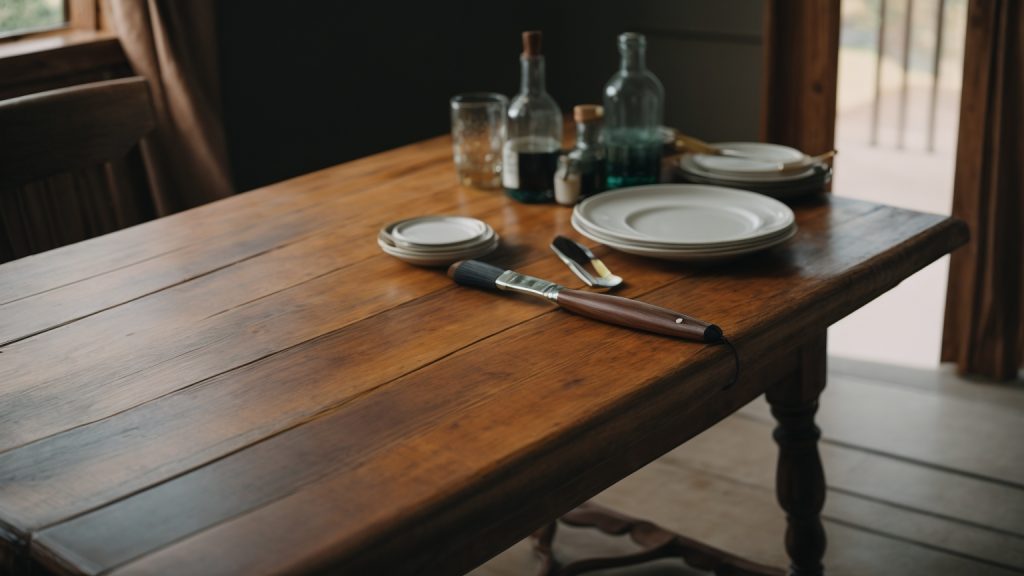
If you have an old wooden table that needs a fresh look, painting it is an excellent way to give it a new lease of life. But before you start, it’s essential to understand the basics of painting to achieve a professional-looking finish.
Types of Paint for Wood
When it comes to painting wood, there are two main types of paint: oil-based and water-based. Oil-based paints are more durable and provide better protection against scratches and stains. However, they take longer to dry and require solvents for cleanup, which can be toxic and harmful to the environment.
Water-based paints, on the other hand, are easier to clean up and dry faster. They are also less toxic and more environmentally friendly than oil-based paints. However, they may not be as durable as oil-based paints, and they may require more coats to achieve full coverage.
When choosing a paint for your wooden table, consider the level of durability you need and the amount of time you have for drying. Also, make sure to choose a color that complements your room’s decor.
Tools Needed for Painting
Before you start painting, you’ll need to gather some essential tools. Here are the tools you’ll need:
- Sandpaper: You’ll need sandpaper to smooth out any rough spots on the table’s surface and to create a surface that the paint can adhere to.
- Primer: A primer helps the paint adhere to the surface and provides a smooth base for the paint to go on.
- Paintbrushes: You’ll need a variety of paintbrushes, including a larger brush for the main areas and smaller brushes for the corners and edges.
- Paint: Choose a high-quality paint that is specifically designed for wooden surfaces.
- Drop cloth: A drop cloth will protect your floor or work surface from drips and spills.
- Painter’s tape: Use painter’s tape to mask off any areas that you don’t want to paint.
By having the right tools and understanding the basics of painting, you can transform your old wooden table into a beautiful and functional piece of furniture that will last for years to come.
Preparing the Wooden Table
Before you start painting your wooden table, it’s important to prepare the surface properly. This will ensure that the paint adheres well and that the finish is smooth and even. In this section, we’ll go over the two main steps involved in preparing your table: cleaning and sanding.
Cleaning the Table
The first step in preparing your wooden table for painting is to clean it thoroughly. This will remove any dirt, dust, or grime that may be on the surface, which can interfere with the paint’s ability to adhere properly. Here are a few tips to help you clean your table effectively:
- Use a soft cloth or sponge to wipe down the surface of the table.
- If there are any stubborn stains or marks, use a mild detergent mixed with warm water to clean them off.
- Be sure to rinse the table thoroughly with clean water to remove any soap residue.
- Allow the table to dry completely before moving on to the next step.
Sanding the Surface
The next step in preparing your wooden table for painting is to sand the surface. Sanding will help to smooth out any rough spots or imperfections in the wood, and it will also help the paint to adhere better. Here’s how to sand your table:
- Choose the right sandpaper: For most tables, a medium-grit sandpaper (such as 120-grit) is a good choice. If your table is in particularly rough shape, you may need to start with a coarser grit and work your way up to a finer grit.
- Sand the surface: Use the sandpaper to sand the entire surface of the table, working in the direction of the wood grain. Be sure to sand evenly and thoroughly, paying extra attention to any rough spots or areas that need extra attention.
- Clean up: Once you’re done sanding, use a soft cloth or vacuum to clean up any dust or debris. Be sure to remove all of the dust, as it can interfere with the paint’s ability to adhere properly.
By following these steps, you’ll be able to prepare your wooden table properly for painting. With a clean, smooth surface, your table will be ready for the next step: priming.
Priming the Table
Before you start painting your wooden table, you need to prime it. Priming helps the paint adhere better to the surface and gives it a smoother finish. Here are some steps to follow when priming your table:
- Choose the right primer: Select a primer that is suitable for wooden surfaces. Look for a primer that is compatible with the type of paint you plan to use. You can choose between oil-based or water-based primers.
- Sand the table: Sand the table to remove any old paint, dirt, or imperfections. Use a sandpaper with a grit of 120-150. Make sure to sand along the grain of the wood.
- Clean the table: Use a damp cloth to wipe away any dust or debris from the sanding. Make sure the table is completely dry before proceeding.
- Apply the primer: Apply the primer evenly using a paintbrush or a roller. Make sure to cover the entire surface of the table. You may need to apply more than one coat of primer depending on the condition of the table.
- Let the primer dry: Wait for the primer to dry completely before painting. This may take a few hours or overnight, depending on the type of primer you used.
- Sand the table again: Once the primer is dry, sand the table again with a fine-grit sandpaper (220 grit). This will help to smooth out any rough spots or bumps.
- Clean the table: Wipe the table with a clean, dry cloth to remove any dust or debris from sanding.
By following these steps, you will have a well-primed table ready for painting. Remember to choose a well-ventilated area to work in and to wear protective gear such as gloves and a mask.
Applying the Paint
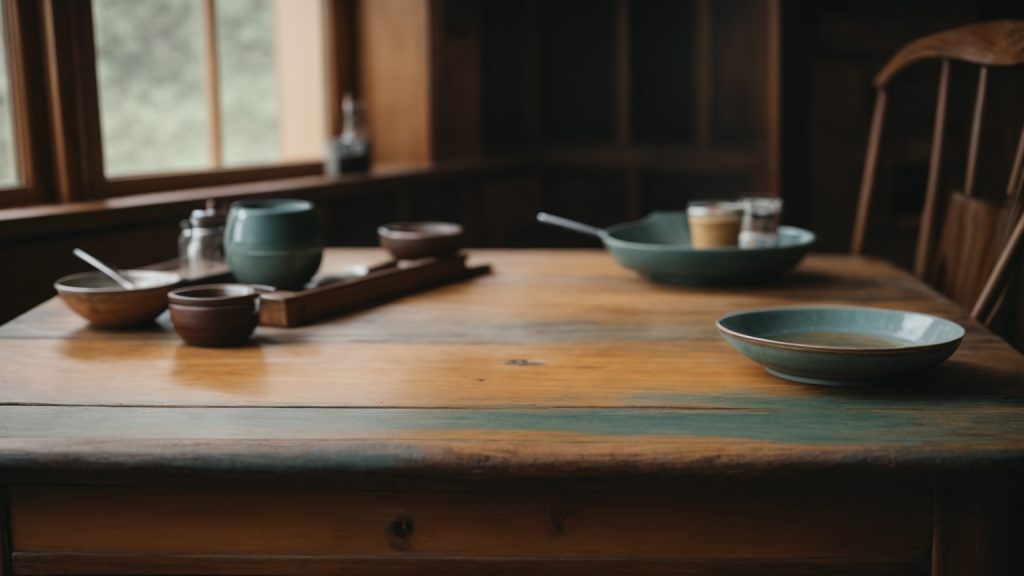
Once you have prepared your wooden table for painting, it’s time to apply the paint. In this section, we will cover the two main sub-sections of applying the paint: choosing the right color and painting techniques.
Choosing the Right Color
When choosing the color for your wooden table, it’s important to consider the overall style and color scheme of the room it will be in. You want to choose a color that complements the rest of the room and creates a cohesive look. Here are some tips to help you choose the right color:
- Look at the color wheel: Choose colors that are opposite each other on the color wheel for a complementary look. If you want a more monochromatic look, choose colors that are next to each other on the color wheel.
- Consider the room’s lighting: If the room is dark, choose a lighter color to brighten it up. If the room is already bright, you can choose a darker color to create a cozy atmosphere.
- Think about the table’s use: If the table will be used for meals, choose a color that won’t show stains easily. If the table is more decorative, you can choose a bolder color.
Painting Techniques
Now that you have chosen the right color, it’s time to apply the paint. Here are some painting techniques to help you achieve a smooth and even finish:
- Use a paintbrush: Use a high-quality paintbrush to apply the paint. Start at the top of the table and work your way down, using long strokes in the direction of the wood grain.
- Roll the paint: If you want to save time, you can use a paint roller to apply the paint to larger areas of the table. Use a small paintbrush to get into any hard-to-reach areas.
- Apply multiple coats: Depending on the color and type of paint you are using, you may need to apply multiple coats to achieve the desired finish. Allow each coat to dry completely before applying the next.
Remember to follow the manufacturer’s instructions for the paint you are using. With the right color and painting techniques, you can transform your wooden table into a beautiful and functional piece of furniture.
Drying and Finishing
After you have painted your wooden table, the next step is to let it dry properly. This is an important step as it ensures that the paint adheres well to the wood and doesn’t peel off easily. Here are some tips to help you ensure that your table dries properly.
Proper Drying Time
Different types of paint require different amounts of time to dry. Most paints will dry to the touch within a few hours, but it’s important to let the paint cure fully before using the table. The curing time can range from a few days to a few weeks, depending on the type of paint used.
To ensure that your table dries properly, it’s important to place it in a well-ventilated area, away from direct sunlight and heat sources. This will help the paint dry evenly and prevent it from cracking or peeling.
Applying Sealant
Once the paint has dried, you may want to apply a sealant to protect the table from scratches and other damage. There are several types of sealants available, including polyurethane, lacquer, and wax.
Polyurethane is a popular choice as it provides a durable, long-lasting finish. It’s available in both water-based and oil-based formulas and can be applied with a brush or sprayer. Lacquer is another option that provides a high-gloss finish, but it’s more difficult to apply than polyurethane.
Wax is a natural option that provides a soft, matte finish. It’s easy to apply and can be buffed to a shine with a soft cloth. However, it’s not as durable as polyurethane or lacquer and may need to be reapplied more frequently.
Before applying any sealant, it’s important to sand the table to ensure that the surface is smooth and free of any imperfections. Then, apply the sealant according to the manufacturer’s instructions and allow it to dry completely before using the table.
Maintenance Tips
Now that you’ve successfully painted your wooden table, it’s important to maintain it properly to ensure the longevity of your hard work. Here are some maintenance tips to keep your table looking great for years to come:
- Use coasters and placemats: To prevent scratches and water damage, always use coasters and placemats when placing glasses, plates, or any other items on your table.
- Avoid harsh chemicals: Harsh chemicals such as bleach or ammonia can damage the paint and finish of your table. Instead, use a mild cleaner and a soft cloth to clean your table.
- Clean spills immediately: Accidents happen, but it’s important to clean up spills as soon as possible to prevent damage to the paint and wood. Use a damp cloth to gently clean up spills and dry the area thoroughly.
- Avoid direct sunlight: Direct sunlight can cause the paint to fade and the wood to dry out, leading to cracks and damage. If possible, place your table away from direct sunlight or use curtains or blinds to block the sun.
- Regularly dust your table: Dust can accumulate on your table and scratch the paint. Use a soft, dry cloth to regularly dust your table and keep it looking clean and beautiful.
By following these simple maintenance tips, you can keep your painted wooden table looking great for years to come.
